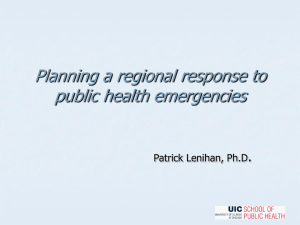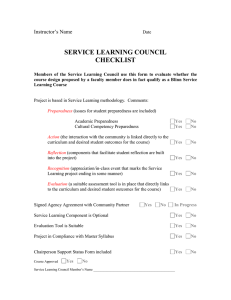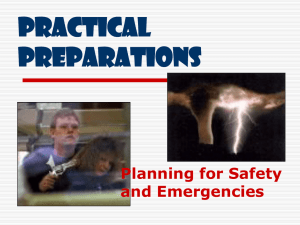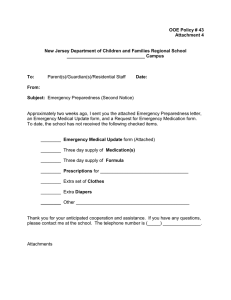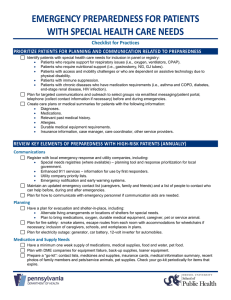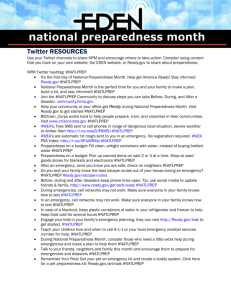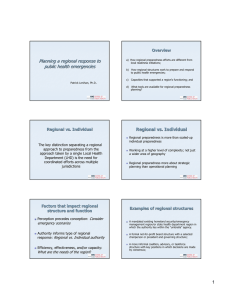Emergency Preparedness Gap Assessment Report - Qiddiya Project
advertisement
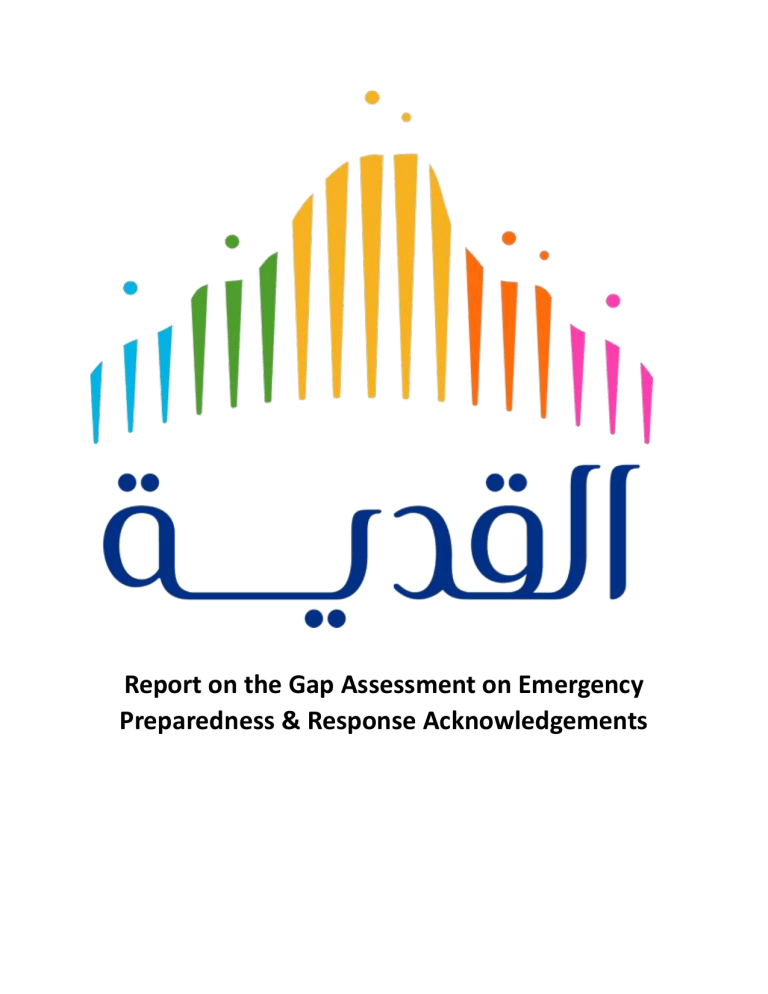
Report on the Gap Assessment on Emergency Preparedness & Response Acknowledgements Acknowledgements This gap assessment consumed a huge amount of work, research, and dedication. Still, the report would not have been possible if we did not have the support of many individuals and organizations. Therefore, we would like to extend our sincere gratitude to all of them. Introduction/Background: This document addresses the findings and results of the survey. The analysis of the survey results and findings may be incorporated and topics that were identified at the time of the survey as issues that may merit further attention may be presented to the CCE for discussion. One of the projects that CCE is focusing on is building the resilience of the community during any emergency. The outcome of this project emphasizes on improving the capacity of health services and communities to act during emergencies. As a part of this outcome, the GAP assessment was carried out to assess the preparedness and response capacity during the times of any emergency. the findings from this assessment will help stakeholders and the development partners to improve the emergency response and preparedness of various health facilities especially at the community level. It will also help the pilot districts to prioritize their activities accordingly. Project profile: Highlights of Qiddiya’s Master Plan Creating a fully integrated destination city like Qiddiya, on such a vast scale, takes a great deal of careful planning. Our Master Plan has been crafted to maintain the natural flow of the water that shaped the land over millions of years, and has been divided into key development nodes, each with its distinct set of offerings and facilities. Our Master Plan has been designed to complement and enhance the amazing natural landscape of our epic site, with a transport network that allows our guests to easily move around from attraction to attraction, soaking up the buzz of the whole destination. Objective General: The objective of the Gap Assessment is to identify gaps and needs in the preparedness and response capacity of emergencies and disaster at the Project. Specific: To assess: ● workers to respond to any emergencies ● communication and transportation facilities ● logistic, finance and administrative arrangements ● preparedness and response plan Methodology: The questionnaire was developed through an extensive literature review carried out by CCE. It was further piloted and tested for validation. The questionnaire comprises of parameters such as communication, transportation, power supply, basic client amenities, waste management, and supply chain, emergency operations planning, response capability and community integrations. These parameters were included based on its importance to the preparation and response to emergencies and disasters. The data for this GAP assessment was collected from the site of project Almost all the facilities were included in the interviews. The heads of the project post were interviewed by the enumerators. Each interview took around 30 minutes to complete. To avoid biases, enumerators (HAs) from other facilities interviewed the facility. Results All workers, engineers, contractors, and suppliers responded to the questionnaires. Emergency Operation Planning: This section documents the gaps from the perspective of emergency operation and planning. It was found that most facilities were yet to be assessed with all-hazard vulnerability Assessment. The table below summarizes the emergency operation planning of the facilities. Communication facilities and accessibility Ability of functioning landline telephone Availability of functioning cellular Phone Availability of functioning computer Availability of internet facility Availability of functioning ambulance Availability of fuel for Ambulance* Access to ambulance Measurement n (%) Yes No 8 18 30.8 69.2 Yes No 25 1 96.2 3.8 Yes No Yes No Yes No Yes No 25 1 7 19 7 19 5 2 26 0 96.2 3.8 26.9 73.1 26.9 73.1 71.4 28.8 100.0 Activities that contribute to prevention and mitigation include: • Advice on land management practice and planning. • The inspection of property and buildings for hazards, • Compliance with standards and building codes, and levels of safe practices. • The preparation of risk assessment and emergency management plans. • Risk categorization and educational programs to promote safe practices in the community • Arrangements to ensure that, should an emergency occur, all those resources and services which are needed to cope with the effects can be efficiently mobilized and deployed; and • Measures to ensure that, should an emergency occur, communities, resources, and services are capable of coping with the effects. Communications Infrastructure The inability to effectively communicate information can lead to duplication of effort to reproduce missing information in situation awareness. Figure 1: Communications Challenges for Emergency Management Post-Disaster (GAO 2009g)
